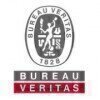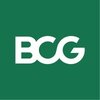Filter interviews by
JCB Quality Engineer Interview Questions, Process, and Tips for Experienced
JCB Quality Engineer Interview Experiences for Experienced
5 interviews found
(1 Question)
- Q1. Quality control
I appeared for an interview before Mar 2024, where I was asked the following questions.
- Q1. How many types of inspection ?
- Ans.
There are several types of inspection used in quality engineering to ensure product standards and compliance.
Visual Inspection: Checking for visible defects, e.g., scratches on a product.
Dimensional Inspection: Measuring physical dimensions, e.g., using calipers to ensure parts meet specifications.
Functional Inspection: Testing if a product performs its intended function, e.g., checking if a switch turns on/off.
Non-Des...
- Q2. How many types of 7 quality control tool?
- Ans.
The 7 quality control tools are essential techniques for problem-solving and process improvement in various industries.
1. Cause-and-Effect Diagram: Also known as Fishbone Diagram, it helps identify root causes of a problem.
2. Check Sheet: A structured form for collecting and analyzing data, useful for tracking defects.
3. Control Chart: A graphical tool to monitor process stability and control over time.
4. Histogram: A ...
- Q3. What is a inspection?
- Ans.
Inspection is a systematic examination of products or processes to ensure quality and compliance with standards.
It involves checking for defects or deviations from specifications.
Examples include visual inspections, measurements, and functional tests.
Inspections can be performed at various stages: incoming materials, in-process, and final product.
Common tools used in inspections are calipers, gauges, and checklists.
- Q4. Difference between vernier vs micrometre
- Ans.
Vernier calipers measure with a sliding scale, while micrometers provide precise measurements using a screw mechanism.
Vernier calipers can measure internal, external dimensions, and depths.
Micrometers are primarily used for measuring small external dimensions.
Vernier calipers typically have a resolution of 0.02 mm.
Micrometers can achieve a resolution of 0.01 mm or better.
Example: Vernier calipers are used in woodworkin
- Q5. What is least count of micrometre
- Ans.
The least count of a micrometer is the smallest measurement it can accurately read, typically 0.01 mm or 10 micrometers.
Least count is determined by the smallest division on the scale.
For a standard micrometer, the least count is usually 0.01 mm.
This means it can measure dimensions with precision up to 10 micrometers.
Example: If a micrometer reads 5.25 mm, it can accurately measure between 5.24 mm and 5.26 mm.
- Q6. How many types of GD& T symbols?
- Ans.
GD&T symbols are used in engineering to define geometric tolerances and relationships between features on a part.
There are 14 primary GD&T symbols, including Flatness, Straightness, Circularity, and Cylindricity.
Form tolerances control the shape of a feature, e.g., Flatness ensures a surface is perfectly flat.
Orientation tolerances include Angularity and Perpendicularity, which define the angle of features rela...
- Q7. How many types of GD & T?
- Ans.
GD&T includes various types that define geometric tolerances for parts, ensuring proper fit and function.
1. Form Tolerances: Control the shape of a feature (e.g., flatness, roundness).
2. Orientation Tolerances: Control the angle of a feature (e.g., parallelism, perpendicularity).
3. Location Tolerances: Control the position of a feature (e.g., position, concentricity).
4. Runout Tolerances: Control the variation of a...
- Q8. What is a concentricity?
- Ans.
Concentricity measures how closely two or more circular features align around a common center.
Concentricity is crucial in engineering to ensure proper fit and function of parts.
Example: In a shaft and bearing assembly, concentricity ensures smooth rotation.
It is measured using tools like coordinate measuring machines (CMM).
High concentricity reduces wear and tear in mechanical systems.
- Q9. What is a perpendicularity?
- Ans.
Perpendicularity is a geometric tolerance that ensures two features are at right angles to each other.
Perpendicularity is defined in engineering drawings and specifications.
It ensures that a surface or axis is at a 90-degree angle to a datum.
Example: A hole must be perpendicular to a flat surface for proper fit.
It is crucial in assemblies where parts must align correctly.
Perpendicularity can be measured using tools lik
- Q10. What is 5s ?
- Ans.
5S is a workplace organization method that improves efficiency and safety through five steps: Sort, Set in order, Shine, Standardize, Sustain.
Sort (Seiri): Remove unnecessary items from the workspace. Example: Discarding outdated tools.
Set in order (Seiton): Organize tools and materials for easy access. Example: Labeling shelves.
Shine (Seiso): Clean the workspace regularly to maintain a tidy environment. Example: Daily...
- Q11. What is a kaizen?
- Ans.
Kaizen is a Japanese term meaning 'continuous improvement' in processes, emphasizing small, incremental changes for better efficiency.
Originated in Japan, particularly in manufacturing sectors like Toyota.
Focuses on improving productivity, quality, and efficiency.
Involves all employees, encouraging their input and participation.
Example: A team identifies a bottleneck in production and implements a new workflow to strea...
- Q12. How many types of Rejection?
- Ans.
Rejection types vary across fields, including product, process, and material rejections, each with distinct causes and implications.
Product Rejection: Occurs when a product fails to meet quality standards, e.g., a defective electronic device.
Process Rejection: Happens when a manufacturing process does not adhere to specifications, e.g., incorrect assembly line procedures.
Material Rejection: Involves rejecting raw mater...
- Q13. How many types of tolerance?
- Ans.
Tolerance types include dimensional, geometric, and material, each ensuring quality and functionality in engineering designs.
Dimensional Tolerance: Specifies allowable variations in size, e.g., a shaft diameter of 10mm ±0.1mm.
Geometric Tolerance: Defines allowable variations in form and orientation, e.g., flatness or parallelism.
Material Tolerance: Relates to the properties of materials, e.g., tensile strength or hardn
Interview Preparation Tips
I applied via Approached by Company and was interviewed in Mar 2024. There was 1 interview round.
(3 Questions)
- Q1. Jcb quality engineer incoming inspection
- Q2. Inspection cylender bock ped plat head inspection
- Q3. Inspection only cylinder head cylinder block cylinder bed plate
Interview Preparation Tips
- Quality Engineering
I applied via Campus Placement and was interviewed in Apr 2023. There were 3 interview rounds.

(3 Questions)
- Q1. Basic personal information
- Q2. Like 1.Personal Information 2.Family Background 3.Working Experience 4.Eduacational Background 5.Technical Skills 6.Projects. Etc
- Q3. What was your educational journey?
- Ans.
I have a strong educational background in engineering and quality management.
Bachelor's degree in Mechanical Engineering
Master's degree in Quality Management
Courses in statistical process control and quality assurance
Continuous learning through workshops and seminars
(2 Questions)
- Q1. Like, 1.Measuring Instruments 2.Core Quality tools 3.GDNT,7QCTools,Poka Yoke,Kaizen,Red Bin Analysis 4.Quality Control
- Q2. What is Quality?
- Ans.
Quality is meeting or exceeding customer expectations through consistent and reliable products or services.
Quality is a measure of how well a product or service meets customer needs and expectations.
It involves consistent and reliable performance, meeting specifications and standards.
Quality is achieved through effective planning, control, and improvement processes.
Examples of quality include products that are durable,...
Interview Preparation Tips
- Autocad
- 7Qctools
- 6Sigma
JCB interview questions for designations
I applied via Walk-in and was interviewed before Jan 2020. There were 5 interview rounds.
Interview Questionnaire
4 Questions
- Q1. Tell me something about you
- Q2. Your favourite subject
- Q3. Future Goals
- Q4. Big goals declared your approach
- Ans.
My approach involves setting big goals and breaking them down into smaller achievable tasks.
I believe in setting ambitious goals that push me to strive for excellence
I break down these goals into smaller, more manageable tasks
I prioritize these tasks and create a plan to achieve them
I regularly track my progress and make adjustments as needed
For example, in my previous role as a Quality Engineer, I set a goal to reduce...
Interview Preparation Tips
Get interview-ready with Top JCB Interview Questions
Top trending discussions






Interview questions from similar companies

I applied via Approached by Company and was interviewed in Sep 2022. There were 2 interview rounds.

(2 Questions)
- Q1. Quality control only question
- Q2. Only quality question
Interview Preparation Tips
OQC qulity check reaport
Molding department quality

I applied via Naukri.com and was interviewed in Jun 2021. There was 1 interview round.
Interview Questionnaire
1 Question
- Q1. Data structures
Interview Preparation Tips

(1 Question)
- Q1. What are the features of Java8
- Ans.
Java 8 introduced significant features like lambdas, streams, and new date/time APIs, enhancing productivity and code readability.
Lambda Expressions: Enable functional programming by allowing you to pass behavior as a parameter. Example: (a, b) -> a + b.
Streams API: Facilitates processing sequences of elements, enabling operations like filter, map, and reduce. Example: list.stream().filter(x -> x > 10).collect...

I applied via Recruitment Consulltant and was interviewed before Mar 2023. There were 2 interview rounds.
(2 Questions)
- Q1. Cycle and balancing of Air conditioner,mazor field complaint.
- Q2. What is saturation point.
- Ans.
Saturation point is the point at which a substance can no longer absorb or dissolve any more of another substance.
Saturation point is reached when a solution can no longer dissolve any more solute.
In chemistry, it refers to the point at which a solution is holding the maximum amount of solute that can be dissolved at a given temperature and pressure.
For example, if you keep adding sugar to a cup of water and stirring i...
(1 Question)
- Q1. About 7 QC tools, detailed of Air conditioning cycle.
Interview Preparation Tips

Live coding on my technology
(1 Question)
- Q1. Oops, solid principles, mvc vs mvvm vs mvp
(1 Question)
- Q1. About ur self and recent achievements
Interview Preparation Tips
JCB Interview FAQs
Tell us how to improve this page.
JCB Interviews By Designations
- JCB Assistant Manager Interview Questions
- JCB Quality Engineer Interview Questions
- JCB Quality Inspector Interview Questions
- JCB Electrical Engineer Interview Questions
- JCB Apprentice Trainee Interview Questions
- JCB Deputy Manager Interview Questions
- JCB Engineer Interview Questions
- JCB Accountant Interview Questions
- Show more
Interview Questions for Popular Designations
- Quality Inspector Interview Questions
- Senior Quality Engineer Interview Questions
- Quality Controller Interview Questions
- Quality Assurance Interview Questions
- Quality Manager Interview Questions
- Quality Executive Interview Questions
- Quality Assurance Officer Interview Questions
- Quality Assurance Quality Control Engineer Interview Questions
- Show more
JCB Quality Engineer Interview Process for Experienced
based on 4 interviews
Interview experience
Interview Questions from Similar Companies
Fast track your campus placements
JCB Quality Engineer Reviews and Ratings
based on 75 reviews
Rating in categories
|
Assistant Manager
691
salaries
| ₹5.2 L/yr - ₹14.9 L/yr |
|
Deputy Manager
504
salaries
| ₹7.5 L/yr - ₹20 L/yr |
|
Senior Engineer
431
salaries
| ₹4.1 L/yr - ₹9.8 L/yr |
|
Quality Engineer
270
salaries
| ₹1.8 L/yr - ₹4.8 L/yr |
|
Manager
221
salaries
| ₹11.3 L/yr - ₹28.8 L/yr |

Landmark Group

McDonald's

IntouchCX

Bureau Veritas
- Home >
- Interviews >
- JCB Interview Questions >
- JCB Quality Engineer Interview Questions for Experienced















